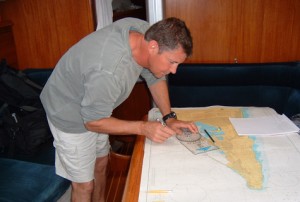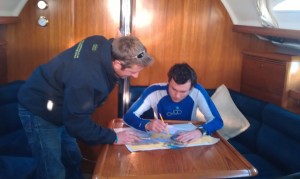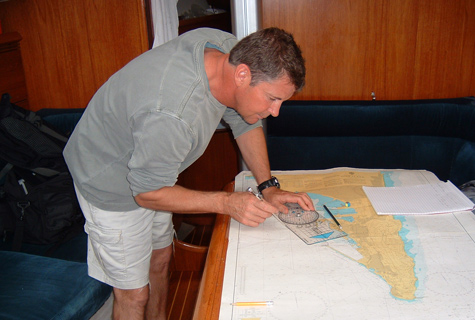RYA Day Skipper Theory in Reading
 The RYA Day Skipper Theory course aims to teach the basics of navigation and pilotage to those who are wanting to navigate familiar waters during the day. Course dates are:
The RYA Day Skipper Theory course aims to teach the basics of navigation and pilotage to those who are wanting to navigate familiar waters during the day. Course dates are:
Dates:
Monday – Thursday, 18:00-21:00, 24th – 27th February
Monday – Thursday, 18:00-21:00, 2nd – 5th March
Saturday & Sunday, 09:30-17:30, 7th & 8th March
(Total 40 hours)
Course price: £350
Venue:
ASWC – Reading
Hanger Road,
Theale,
Reading
RG7 4AP
 RYA Day Skipper Theory
RYA Day Skipper Theory
2 exam papers. This is an absolute must for wannabee yachties that wish to progress from the skills of dinghy sailing to being able to handle a boat in coastal waters during the day. It is invaluable if you are thinking of trying a flotilla holiday in the future and then working your way up to bare boat charter. It covers a variety of navigation and further seamanship skills.
In the Day Skipper theory course students are taught the basics of coastal and inshore navigation and pilotage including chartwork, position fixing, plotting a course to steer, weather forecasting, a knowledge of tides and the International Regulations for Prevention of Collision at Sea. The first time you safely navigate to a new destination will give you an immense feeling of satisfaction. As well as navigation the RYA Day Skipper theory course will give students an understanding of different yacht types and the equipment they carry as well as safety procedures such as distress calls, use of flares, safety harnesses, life jackets and life-rafts.
 RYA Day Skipper Theory Syllabus – more detail
RYA Day Skipper Theory Syllabus – more detail
A comprehensive introduction to chart work, navigation, meteorology and the basics of seamanship for Competent Crew. You will find this course invaluable if you want to learn to start making decisions onboard.
- Nautical terms
Parts of a boat and hull
General nautical terminology
- Ropework
Knowledge of the properties of synthetic ropes in common use
- Anchor work
Characteristics of different types of anchor
Considerations to be taken into account when anchoring
- Safety
Knowledge of the safety equipment to be carried, its stowage and use (see RYA Boat Safety Handbook, C8)
Fire precautions and fire fighting
Use of personal safety equipment, harnesses and life-jackets.
Ability to send a distress signal by VHF radio-telephone.
Basic knowledge of rescue procedures including helicopter rescue
- International Regulations for Preventing Collisions at Sea
Steering and sailing rules (5,7,8,9,10 and 12-19)
General rules (all other rules)
- Definition of position, course and speed
Latitude and longitude
Knowledge of standard navigational terms
True bearings and courses
The knot
- Navigational charts and publications
Information shown on charts, chart symbols and representation of direction and distance
Navigational publications in common use
Chart correction
- Navigational drawing instruments
Use of parallel rulers, dividers and proprietary plotting instruments
- Compass
Application of variation
Awareness of deviation and its causes
Use of hand-bearing compass
- Chartwork
Dead reckoning and estimated position including an awareness of leeway
Techniques of visual fixing
Satellite-derived positions
Use of waypoints to fix position
Course to steer
- Tides and tidal streams
Tidal definitions, levels and datum
Tide tables
Use of Admiralty method of determining tidal height at standard port and awareness of corrections for secondary ports
Use of tidal diamonds and tidal stream atlases for chartwork
- Visual aids to navigation
Lighthouses and beacons, light characteristics
- Meteorology
Sources of broadcast meteorological information
Knowledge of terms used in shipping forecasts, including the Beaufort scale, and their significance to small craft
Basic knowledge of highs, lows and fronts
- Passage planning
Preparation of navigational plan for short coastal passages. Meteorological considerations in planning short coastal passages
Use of waypoints on passaged. Importance of confirmation of position by an independent source
Keeping a navigational
- Navigation in restricted visibility
Precautions to be taken in, and limitations imposed by fog
- Pilotage
Use of transits, leading lines and clearing lines
IALA system of buoyage for Region A
Use of sailing directions
Pilotage plans and harbour entry
- Marine environment
Responsibility for avoiding pollution and protecting the marine environment
To Book:
Please check availability exists… pay a funds to secure a booking. Full payment, if you can do it, halves our admin time so it is much appreciated.
Payment can be made:
Either by transfer (easiest admin for us) or card by debit cards. Please enquire about credit cards.
Once Booked: You will receive a receipt and a confirmation / joining letter including ‘what to bring’ notes.
Email us: info@yachtforce.co.uk
Phone us: 02380 016450

